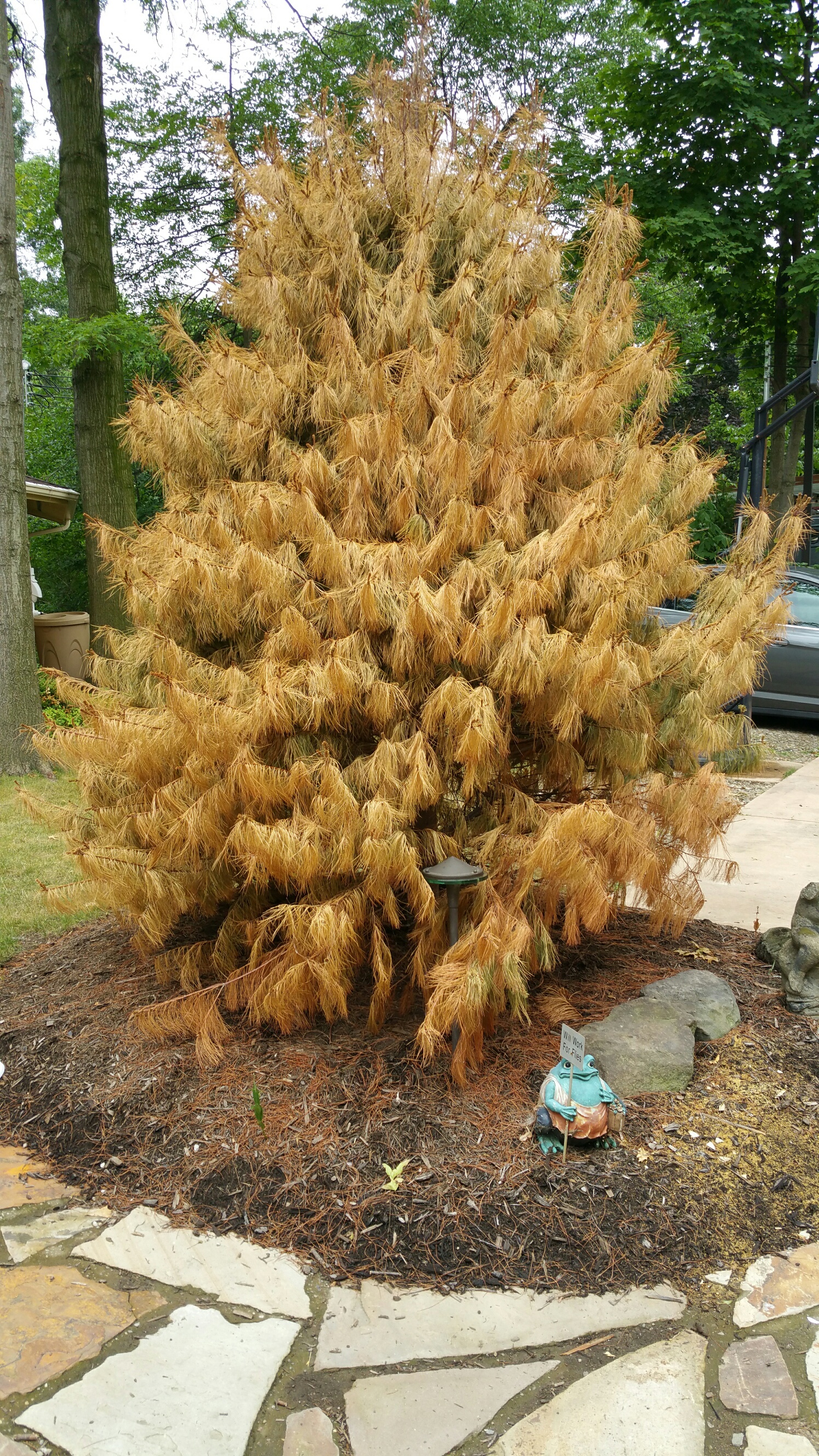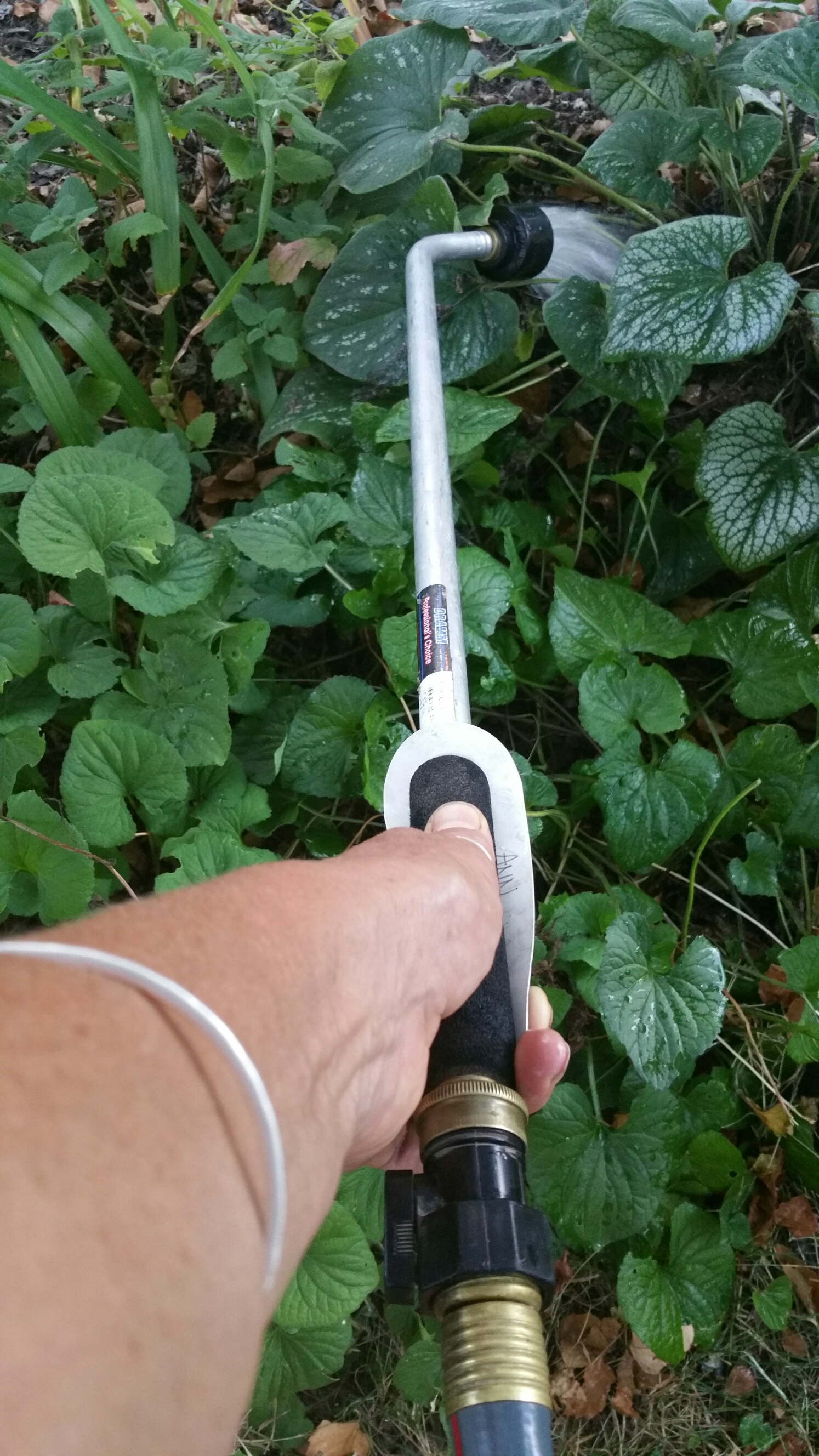By Contributing Editor Ann McCulloh
Our current dry spell in Northeast Ohio is a rather unfamiliar challenge to gardeners, accustomed as we are to a generous annual average rainfall of 39.14 inches. The United States Drought Monitor http://droughtmonitor.unl.edu/ recently updated our status to “Moderate Drought”, from “Abnormally Dry” a week ago. The National Weather Service is not predicting relief anytime soon. Add unusually hot days, one after another, and the situation is getting serious for gardens, and gardeners! (Although when I Google “Cleveland drought” I get endless hits about a basketball championship, and nothing at all about weather. Hmmm?)
When I dig down and find powder dry soil at a depth of 12”, I know that annuals, perennials, shrubs and even trees are in trouble and even in danger of dying. The ones that survive will show the results of stress with slowed growth, fewer flowers, shoot dieback and increased susceptibility to pests and diseases.
(Crispy white pine, a recent casualty)
Bottom line: we need to water. Alot! Most people just are not watering enough right now. Since it’s hard to know if you’re doing it correctly, here are some tips that I find helpful:
- Established plants need a minimum of 1” of rain per week for optimal growth. Newly planted ones, more like 2” per week. If you are using a sprinkler, set an empty tuna can within the range of the spray. Check the amount of time needed to fill the can as the sprinkler runs. That’s how long the sprinkler should run each week to supply that critical 1”.
- Even established trees need supplemental water during a drought. A soaker hose or sprinkler run for about an hour will usually saturate the soil to the needed depth of 10”. Doing this even once or twice during a drought event will be beneficial.
- Water deeply and infrequently (just 1-2 times a week for established plants, 5-7 times a week only for the smallest, newest seedlings.) This allows for development of deeper, more drought-resistant roots.
- Large tomato plants, full grown hostas, small shrubs and so on need about 1-2 gallons of water per week. Count the seconds it takes to fill a watering can with the hose. That’s how long to hold the hose on each plant.
- Water the soil at the base of the plant, soaking the soil, not the leaves! Plants absorb water through their roots, while wet leaves allow diseases to thrive. A long-handled watering wand attached to the hose with a shutoff valve is my favorite tool for this.
- Watering in the evening conserves some water as it can soak into the ground rather than evaporating into the warmer daytime air.
- Cover bare soil with a 2” layer of mulch at all times! Shredded bark, pine nuggets, pine straw, wood chips, dry leaves, or straw are all good options.
And be sure to keep the gardener well-hydrated too! I recommend plentiful iced tea and occasional dashes through the sprinkler.


Thanks! That’s really helpful information.